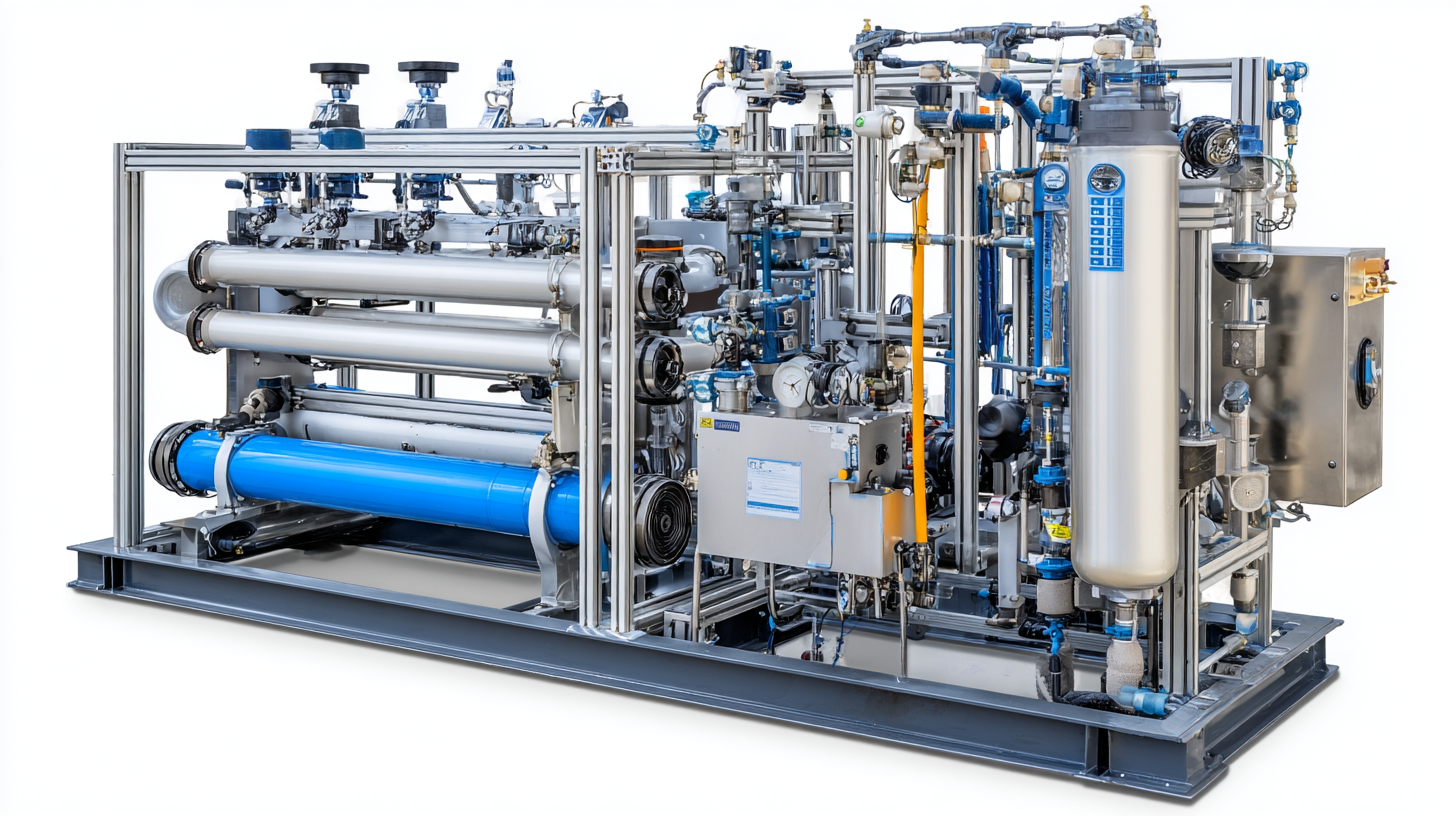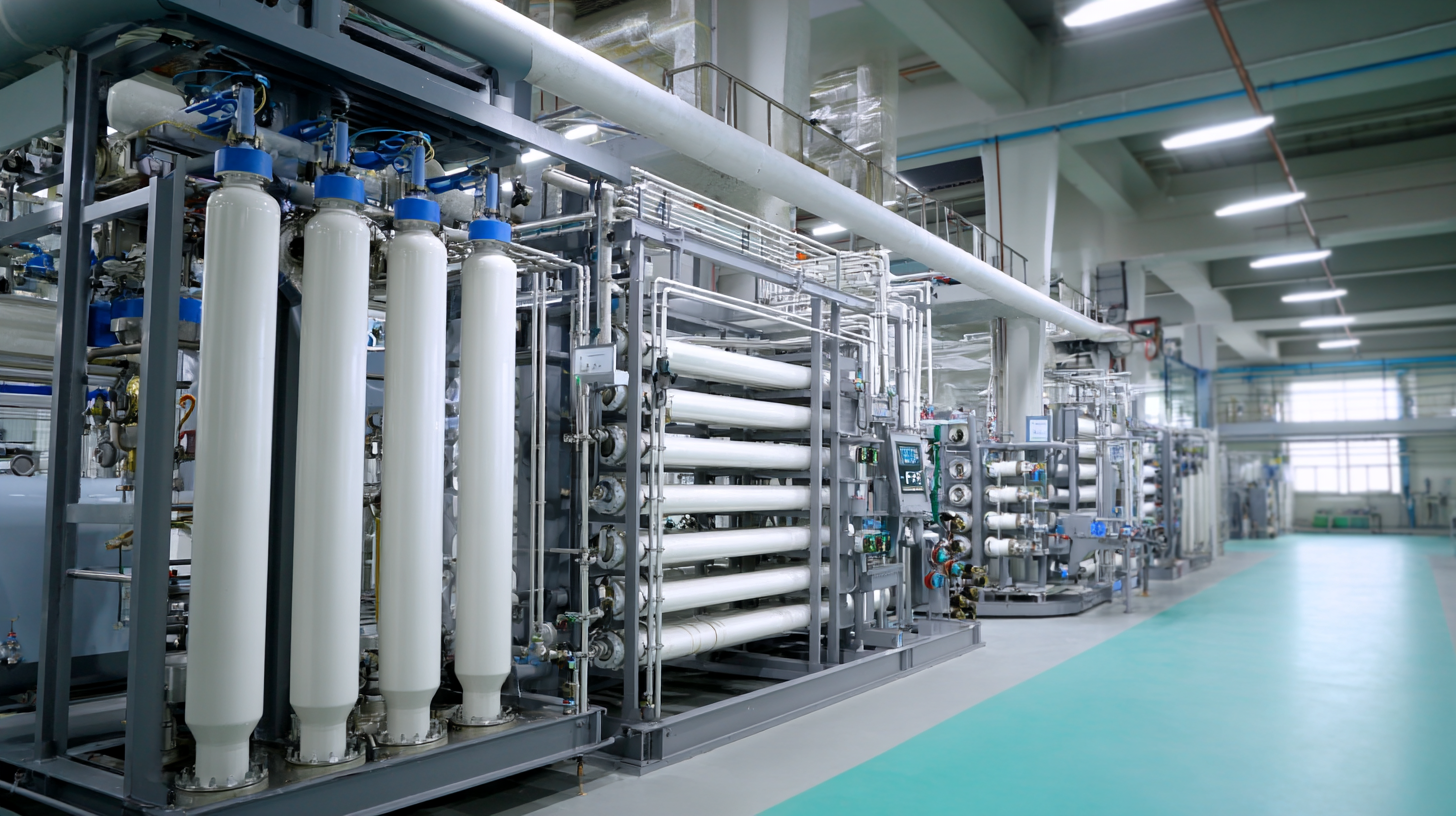Leave Your Message
Request a Quote
In today's competitive market, identifying top suppliers for Nanofiltration Systems is crucial for businesses aiming to enhance their water treatment processes. A report by MarketsandMarkets indicates that the global nanofiltration market is expected to reach USD 5.58 billion by 2026, growing at a CAGR of 10.2% from 2021. This growth underscores the increasing demand for efficient filtration solutions that not only provide superior quality but also contribute to sustainable practices. With various suppliers offering a range of systems, it becomes imperative to understand the key features and benefits of different Nanofiltration Systems. By evaluating performance metrics, supplier credibility, and technological advancements, businesses can make informed decisions that align with their operational needs and sustainability goals. This blog will provide a comprehensive comparison of leading suppliers, ensuring that you can identify the best options available in today’s market.

Identifying the latest trends in nanofiltration technology is crucial when selecting top suppliers for your filtration needs. As the PFAS filtration market is projected to reach USD 2.99 billion by 2030, understanding current advancements can position your business favorably. Key trends include the integration of advanced membrane technologies that improve filtration efficiency and reduce operational costs. Suppliers who are investing in research and development are likely to be at the forefront of these innovations.
When assessing potential suppliers, consider these tips: First, evaluate their commitment to sustainability and regulatory compliance, as these factors are increasingly important in the filtration market. Second, look for suppliers that offer customized solutions tailored to specific industry challenges, ensuring a better alignment with your business goals. Lastly, investigate their customer support and after-sales services as ongoing support is essential for maximizing the effectiveness of filtration systems.
| Supplier Type | Technology Used | Application Areas | Market Trends | Sustainability Measures | Customer Support Rating |
|---|---|---|---|---|---|
| Membrane Manufacturer | Polyamide Composite | Water Treatment, Food & Beverages | Increased Demand for Efficiency | Recyclable Materials | 4.5/5 |
| System Integrator | Spiral Wound Modules | Industrial Wastewater, Dairy Processing | Growing Focus on Water Reuse | Energy Efficient Designs | 4.7/5 |
| Technology Provider | Nanofiltration Membrane Technology | Pharmaceuticals, Drinking Water | Advancements in Membrane Performance | Reduction in Chemical Use | 4.6/5 |
| Consultancy Services | System Optimization | Agricultural Runoff, Municipal Water | Regulatory Compliance Support | Sustainable Practices Policy | 4.4/5 |
 Identifying top suppliers for nanofiltration systems goes beyond just assessing the technology itself; it requires a deep understanding of supplier certifications and performance metrics. Supplier certifications serve as a benchmark for quality, ensuring that the systems meet industry standards. These certifications can indicate a supplier's commitment to quality management practices, such as Total Quality Management (TQM), which holds all parties accountable for the quality of the final product.
Identifying top suppliers for nanofiltration systems goes beyond just assessing the technology itself; it requires a deep understanding of supplier certifications and performance metrics. Supplier certifications serve as a benchmark for quality, ensuring that the systems meet industry standards. These certifications can indicate a supplier's commitment to quality management practices, such as Total Quality Management (TQM), which holds all parties accountable for the quality of the final product.
Additionally, certifications often correlate with a supplier's ability to optimize supply chains, reducing costs and improving efficiency in delivering the best nanofiltration solutions.
Performance metrics, such as market share and production efficiency, provide further insight into a supplier's reliability and capacity. By analyzing these metrics, companies can gauge how well a supplier is positioned within the industry, their responsiveness to market demands, and their overall stability. This financial health is crucial, especially in sectors that heavily rely on effective supply chain management. In a competitive landscape, suppliers who excel in maintaining robust performance metrics are more likely to sustain the quality and efficiency needed to deliver top-of-the-line nanofiltration systems.
When evaluating the cost-effectiveness of leading nanofiltration systems, it is essential to consider not only the initial purchase price but also the long-term operational costs. A top-tier nanofiltration system should provide a balance between upfront investment and ongoing maintenance expenses. Factors such as energy consumption, membrane replacement frequency, and the need for chemical cleaning can significantly impact overall cost. Buyers should analyze these components to determine the true financial implications over the system's lifespan.
Additionally, performance metrics, such as water recovery rates and permeate quality, are crucial in assessing the value of a nanofiltration system. Systems that demonstrate efficiency in both performance and operational costs invariably deliver better value. Conducting a thorough analysis of supplier offerings—comparing both technical specifications and cost data—will help in identifying the most effective solutions. Engaging with current users and reviewing case studies can also provide insights into the real-world cost benefits of various systems, enabling companies to make informed decisions that align with their specific needs and budgetary constraints.
When selecting top suppliers for nanofiltration systems, analyzing customer reviews and case studies is essential for discerning quality and reliability. A recent industry report indicates that approximately 70% of customers consider online reviews to be their most trusted source of information when making equipment purchasing decisions. By closely examining the reviews of leading suppliers, one can gauge their commitment to product performance, customer service, and technological innovation—key factors that contribute to long-term satisfaction.
Case studies provide another critical lens through which to evaluate suppliers. According to a study by Global Water Intelligence, companies that have implemented nanofiltration systems have seen an average reduction in operational costs by up to 30%. Real-life applications illustrate how top suppliers tailor their solutions to specific industry needs, showcasing their expertise and adaptability. Moreover, suppliers with documented successful case studies often highlight quantitative improvements achieved by their clients, such as increased membrane lifespan and enhanced water quality, further solidifying their credibility in the market. Engaging with this qualitative data equips potential buyers with a clearer understanding of which suppliers are positioned to meet their unique filtration challenges.
As the demand for efficient water purification systems continues to surge, nanofiltration technology has emerged as a pivotal solution. Future innovations in nanofiltration promise to enhance not only the performance but also the versatility of these systems. For instance, advancements in membrane materials are being investigated, including the development of graphene-based membranes that offer superior selectivity and fouling resistance. These innovations are crucial for suppliers to adapt to the evolving requirements of industries that rely on high-quality water treatment.

Moreover, the integration of smart technologies into nanofiltration systems is set to revolutionize the market. Suppliers that leverage IoT (Internet of Things) capabilities can enable real-time monitoring and control of filtration processes, resulting in improved efficiency and reduced operational costs. This shift towards smarter systems will influence supplier choices as companies seek partnerships that prioritize not just traditional filtration techniques but also cutting-edge technologies that can provide a competitive edge. By embracing these future innovations, suppliers can position themselves as leaders in the rapidly changing landscape of nanofiltration technology.

